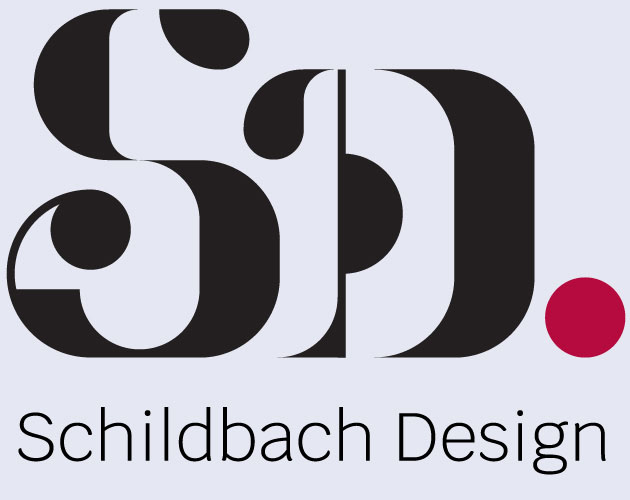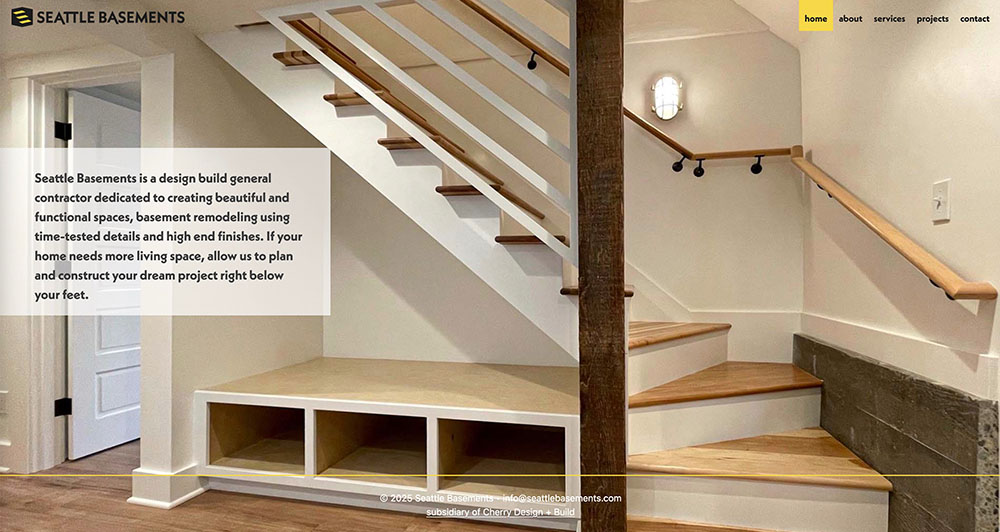I believe staying social, in person, is essential to our health and happiness. It is even good for business. Sam Adams is a client I met at a friend’s house. Sam owns the businesses, Cherry Design + Build and a subsidiary Seattle Basements. He hired me to work on his business identity. Seattle Basements is a completed online identity design, and my design for Cherry Design + Build will launch the summer of 2025. As the name says, Seattle Basements is a general contractor that renovates and builds out basements in the Seattle area.
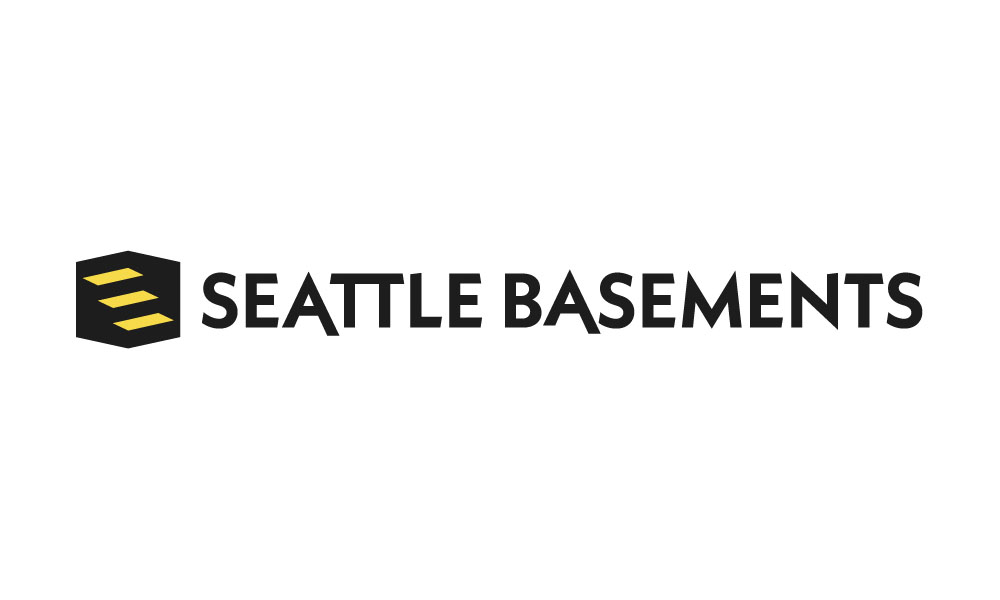
Seattle Basements Logo Design
The cornerstone of an identity design (also commonly called Branding), is the logo. With my personal identity in part being a designer, I’m saddened by what logo builders and AI have done to the designer profession. Logo design has become a small fraction of what I do because of all the ways people get quick and cheap logos. So, I’m so grateful to Sam Adams for keeping the craft of logo design alive and have me go through the process with him of creating the cornerstone of his business identity.
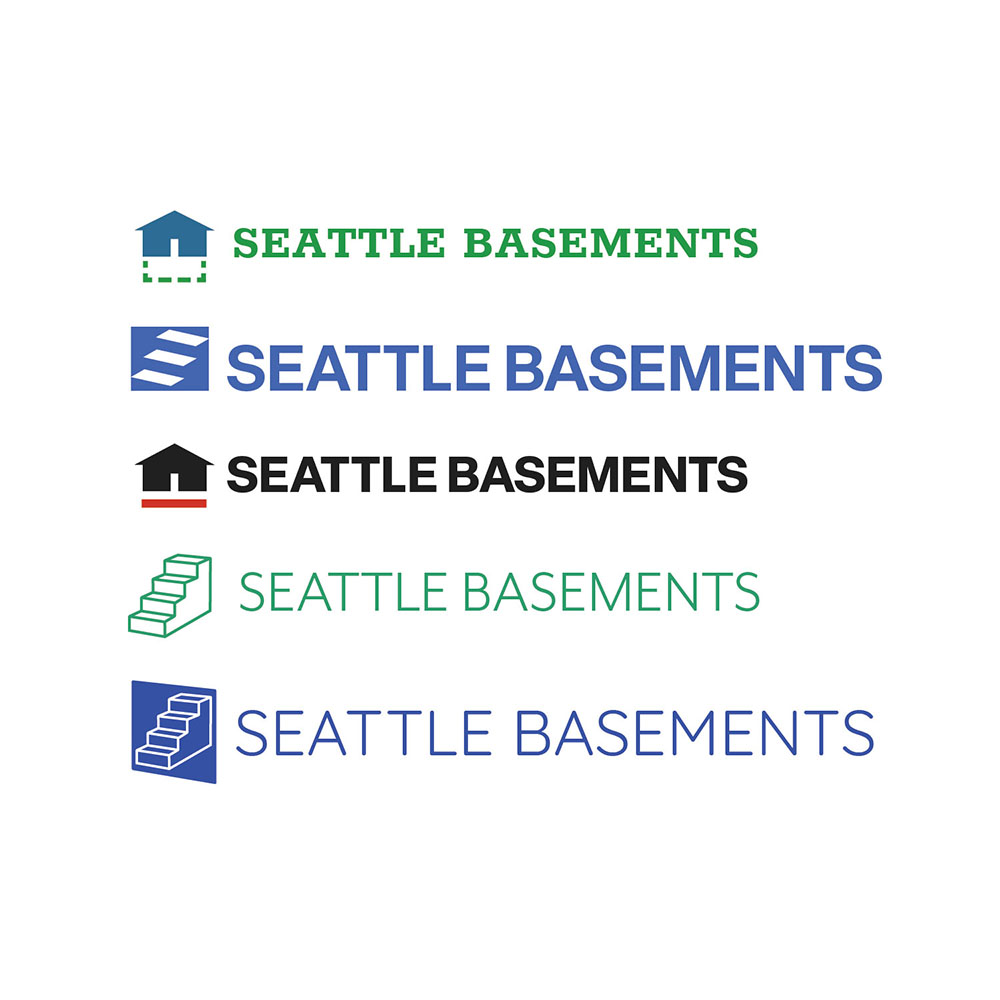
The process of making a logo is first an exploration into the identity you would like to have for your business. It took three rounds of rough designs before finding a visual identity that fit Sam’s vision of the stairs going down to the basement. The other 4 rounds involved fine tuning a visual play with the cube and the stairs. The process often starts out with my personal style for logos and finishes with more of a focus on what the business needs. In this case, the logo is simple and iconic. I was happy that it retained a subtle MC Escher play with a visual illusion. The basement steps are merely parallelograms. But, when inserted into a cube, they appear to be stairs.
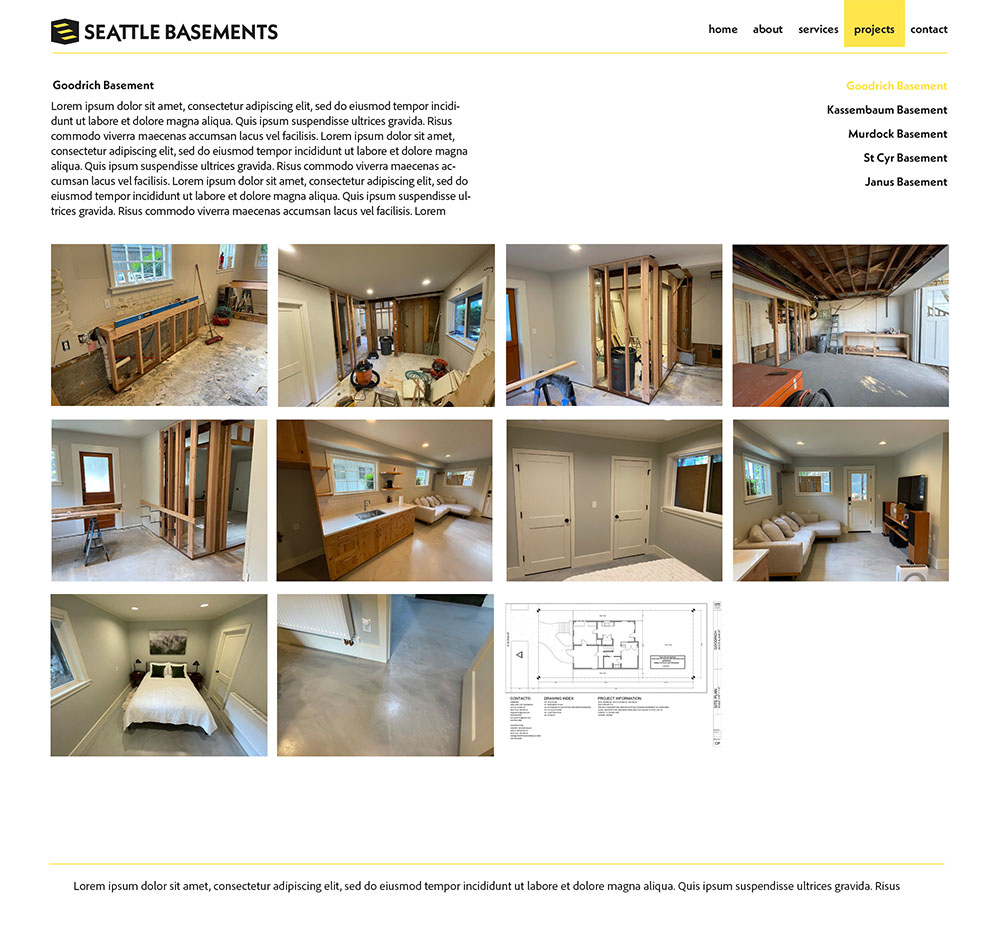
WordPress Website
Design
The next step to a business identity is the website. I carried over the colors of the logo into the site design. Before coding the site, I present the client with design prototypes in Adobe Illustrator. These design prototypes are for planning the site and give the client options for the design. I usually provide desktop and mobile views for the home page and some of the interior pages. Once approved, I move to development.
Development
My Content Management System of choice is WordPress. Not wordpress.com. I use wordpress.org, the open source platform that allows you to build practically anything. Many WordPress web designers have moved over to web builders like Divi which turn the process into drag and drop of existing designs and no coding experience is needed. The web builders funnel you into a design process that makes all sites look alike. And, these builders are bloated, ironically making editing more confusing, where you are navigating around 90% of the components which get in the way of finding the 10% that you actually use.
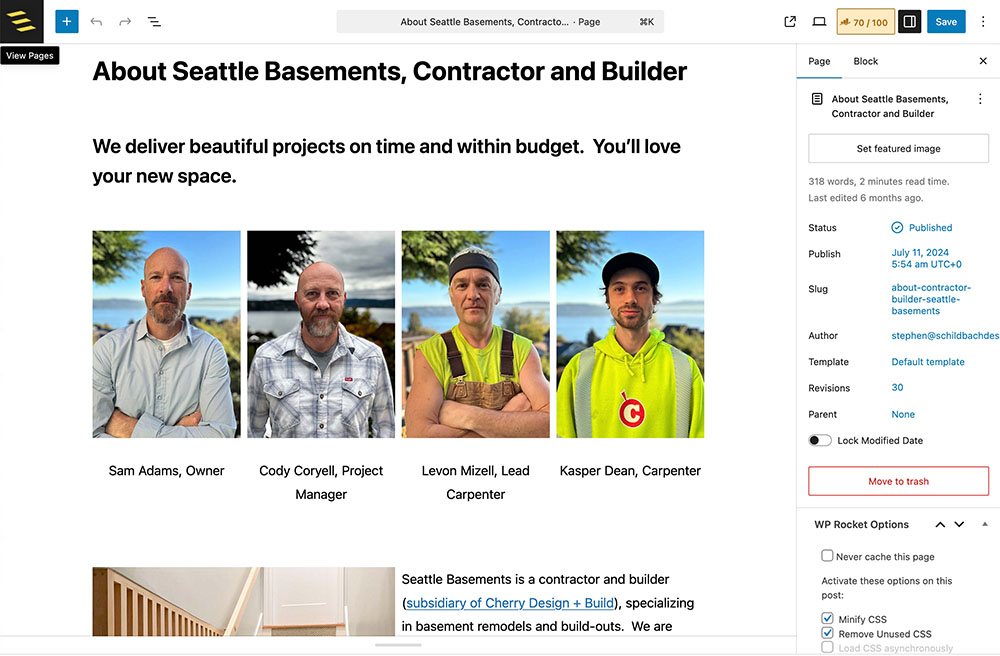
I like coding my own custom WordPress themes in html, php, javascript, and css, with the help of Underscores. Underscores, by Automattic, is a blank slate that allows me to design in my aesthetic, and provides the client with only what they need. They still can edit their own site without any need for coding. Editing content is as simple as typing and adding photos in any common application. The WordPress core has become so advanced, with the ability to provide sites most of what they need without additional products.
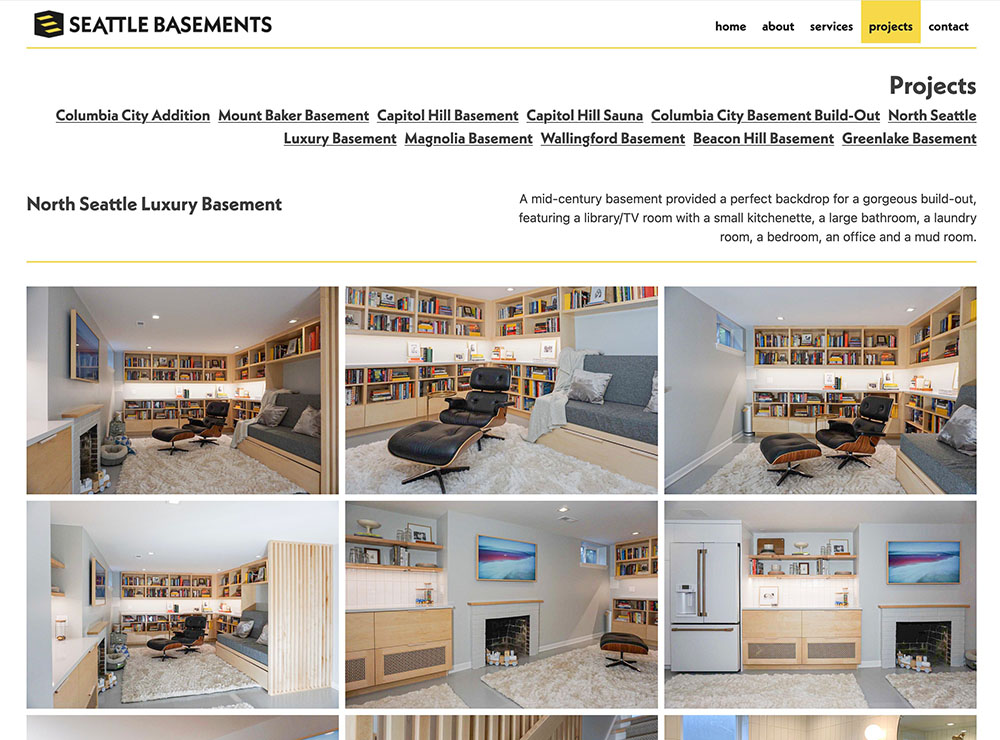
When developing the site, the majority of it’s functionality is coming from the WordPress core. I’ve installed only 12 plugins in this project. Only 5 are used for the functionality. The other 7 are used for security and search engine optimizaiton. Simplicity, beauty, and effectiveness is always my goal as a web designer.
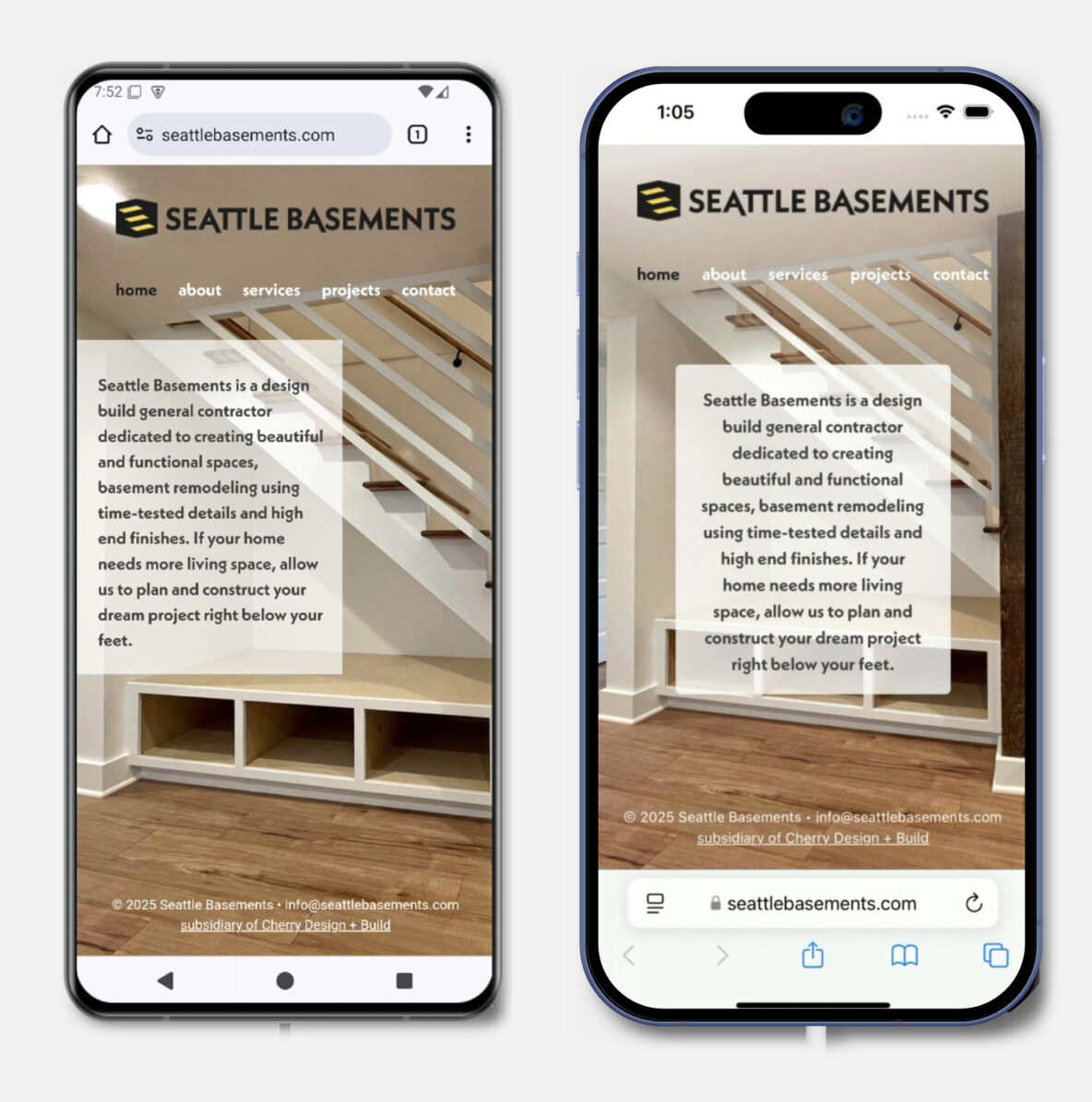
Responsive Design & the Mobile View
Browsing websites on a desktop or laptop is so much more enjoyable than viewing sites on a phone. But, the reality is 40%-60% of visitors, depending on the site, are browsing on a phone. This has me revisiting my past websites, and improving the mobile view as I did above. The original design took the desktop view and cropped the visual field for the phone. My new design looks at the design for the phone by itself, centering all objects, and removing distracting elements and lightening the ceiling so that the logo stands out.
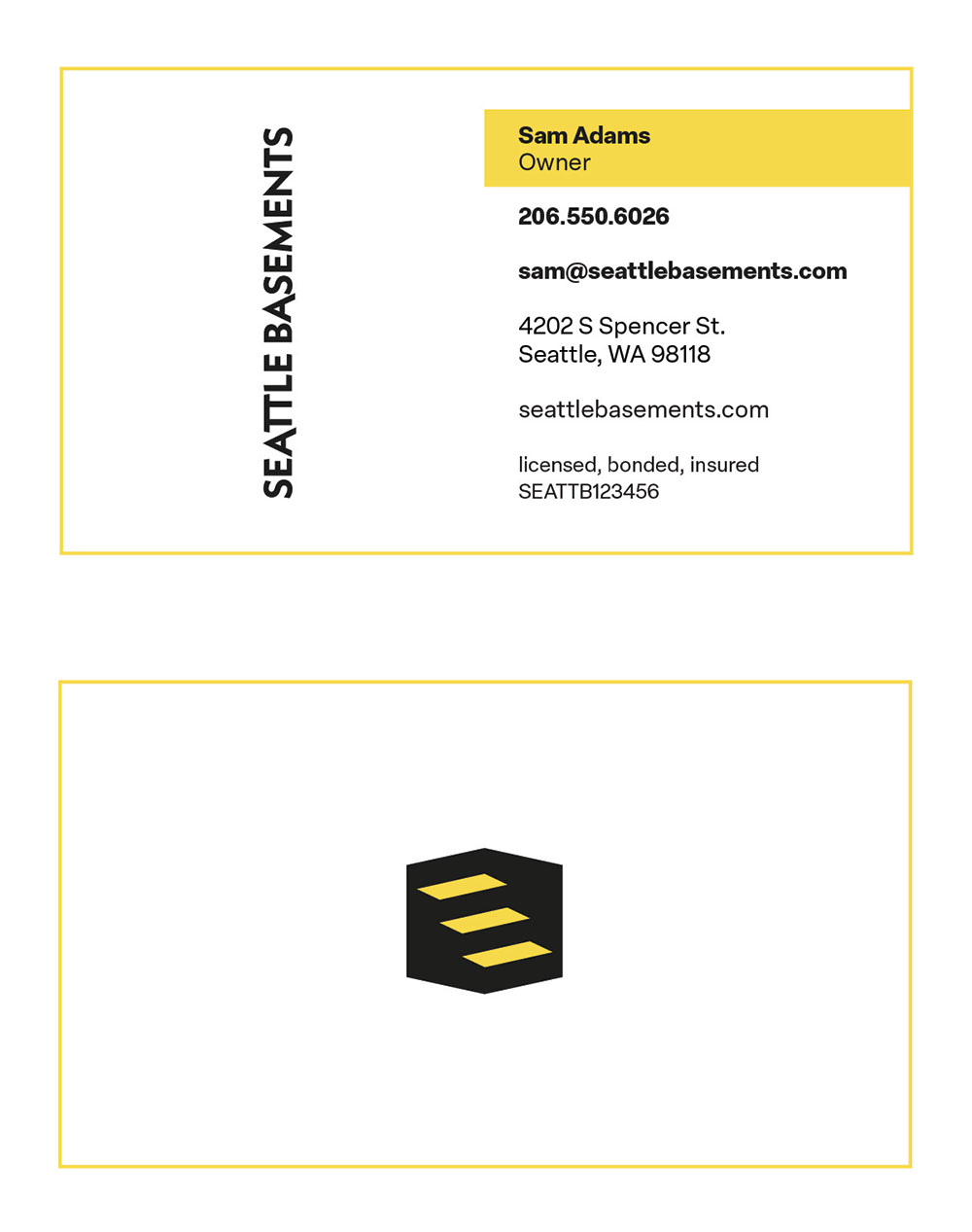
Business Card, Letterhead, and Other Collateral
To complete the Seattle Basement business identity, I created a business card, letterhead, and the logo was a great shape for using on clothing. This kind of old school business collateral still comes in handy for in person meetings, sending out invoices, estimates, and communications.
Search Engine Optimization
Beyond the business identity is search engine optimizaiton. Many of my clients don’t want to use social media for their business, increasing the importance of the website, Google My Business, and online reviews, to generate new clients. For the website to be found in organic search, I apply a search engine optimization package that contains extra coding to help guide the search engines, a website speed plugin, and a search engine optimization plugin that guides me in improving ranking online.
To find out more about Seattle Basements, go to seattlebasements.com.
